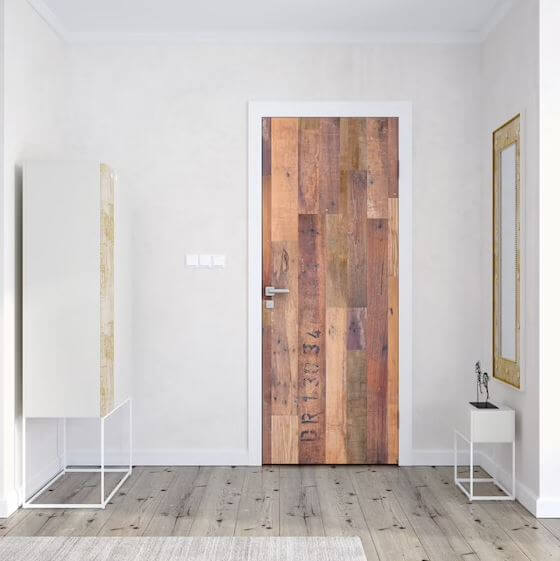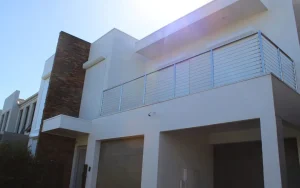The Benefits of Door Wrapping for Interior Designing
 Door wrapping is a popular trend in interior designing that involves covering the surfaces of doors with a material other than the original wood. This technique can be used to create a unique and eye-catching look in any room and offers several benefits over traditional door design.
Door wrapping is a popular trend in interior designing that involves covering the surfaces of doors with a material other than the original wood. This technique can be used to create a unique and eye-catching look in any room and offers several benefits over traditional door design.
One of the biggest advantages of door wrapping is its versatility. Door wraps can be made from a wide range of materials, including vinyl, laminate, or even fabric. This means that designers have a vast array of options when it comes to creating the perfect look for their clients. For example, if you’re going for a sleek and modern look, you can opt for a high-gloss vinyl wrap, or if you’re looking for something more organic, you might choose a wood-look laminate wrap.
Another benefit of door wrapping is that it provides a low-cost alternative to replacing doors entirely. Installing new doors can be an expensive and time-consuming process, whereas door wrapping is quick, easy, and much more cost-effective. This makes it an ideal option for anyone looking to add a new dimension to their interior design without breaking the bank.
Lastly, door wrapping provides a practical solution for disguising damaged doors. If a door is scuffed, scratched, or otherwise damaged, it can be difficult to repair or replace. Wrapping the door can provide a quick and simple solution to hiding the damage and restoring the door’s appearance to its original state.
How to Choose the Right Material for Your Door-Wrapping Project
The choice of material is critical when it comes to door wrapping, as it will determine the final look and feel of the space. With so many options to choose from, it can be difficult to know where to start.
First and foremost, consider the room in which the door will be located. For example, if you’re wrapping a door in a bathroom, you might opt for a moisture-resistant material like vinyl or laminate. On the other hand, if you’re wrapping a door in a bedroom, you might choose a more luxurious material like fabric.
Another important consideration is the color and texture of the wrap. If you’re looking for a bold statement, opt for a high-gloss or metallic wrap, or if you’re after something more understated, consider a matte finish. You can also opt for a wrap with a texture, such as a wood-look or stone look, to add an extra layer of interest to the space.
Finally, consider the durability of the wrap. Certain materials may be more prone to fading or chipping than others, so it’s important to choose a wrap that will stand the test of time.
Tips for a Successful Door-Wrapping Project
Once you’ve chosen the right material for your door-wrapping project, it’s time to get started. Here are a few tips to help ensure that your project is a success:
- Measure the door carefully: Before you order your wrap, make sure to measure the door accurately, including the height, width, and thickness. This will ensure that you order the correct size wrap, saving you time and money.
- Clean the door surface: Before you start wrapping, make sure to clean the door surface thoroughly. Any dirt, grease, or residue will prevent the wrap from adhering properly.
- Work slowly and carefully: Wrapping a door can be a delicate process, so it’s important to take your time and work slowly and carefully. Start by positioning the wrap in the center of the door and slowly smoothing it outwards, working out any bubbles or wrinkles as you go.







